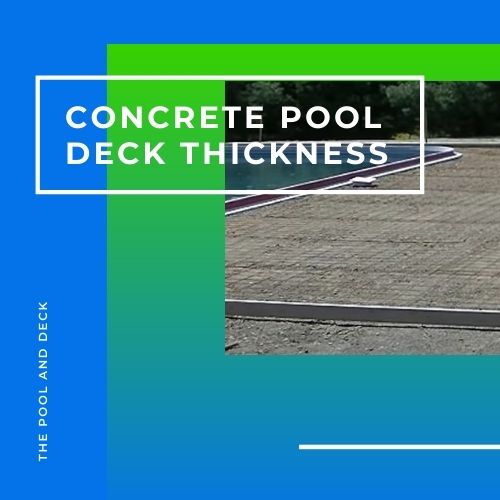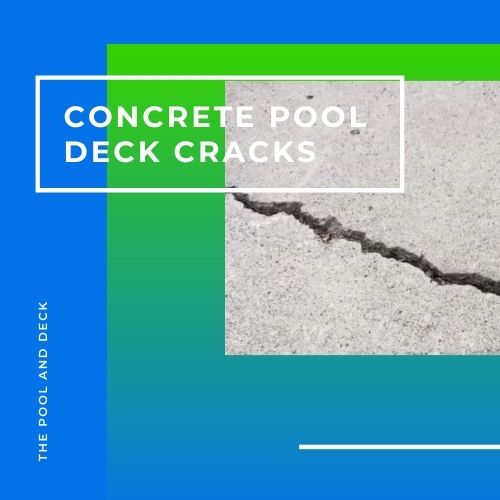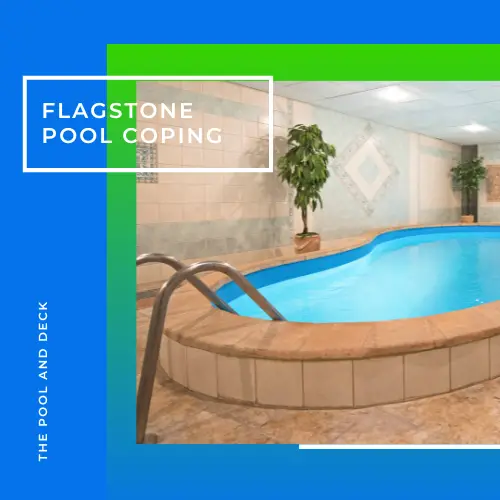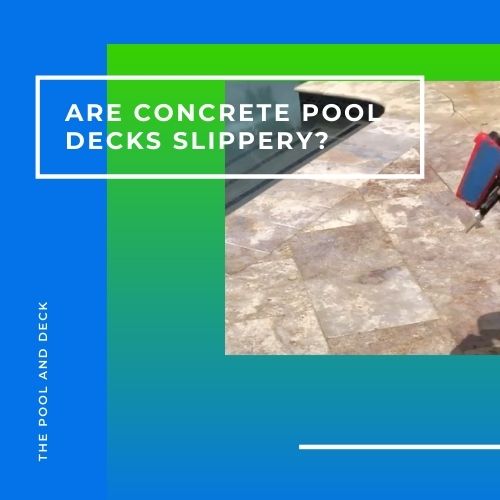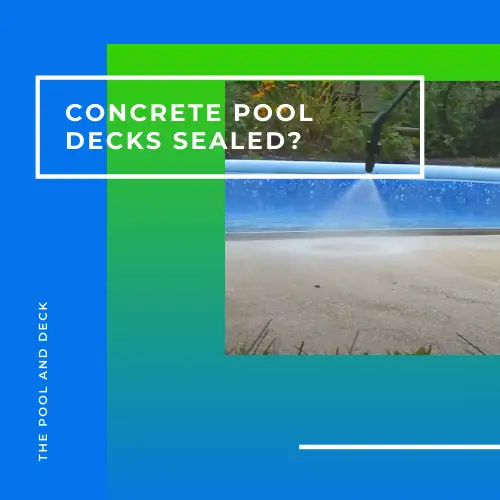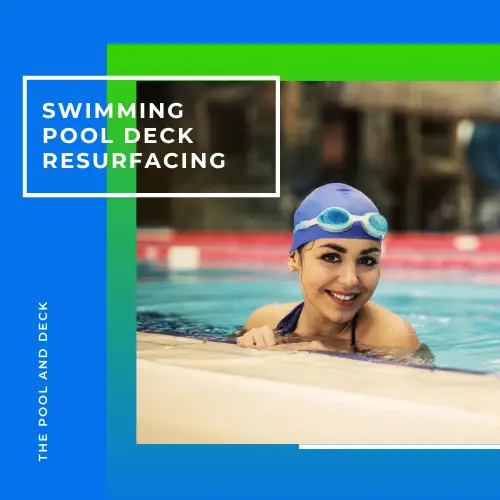Concrete vs Pavers for Pool Decks: Which is the Best Option?
Table of Contents
Are Pavers or Concrete Better for Pool Decking?
When it comes to a concrete vs pavers for pool decks, pavers are better suited for smaller pool decks. You can install them yourself and save money. Pavers are more slip resistant, get less hot in summer and are easier to replace if damaged.
A poured concrete slab, on the other hand, is a better option for larger pool decks, especially if you want the exquisite looks of stamped concrete. Of course the cost will be substantially higher.
An inground pool in the backyard is a long term asset. The pool must, however, have a durable pool deck that you and your family can enjoy for years to come. Concrete is possibly the most cost effective material for your pool deck.
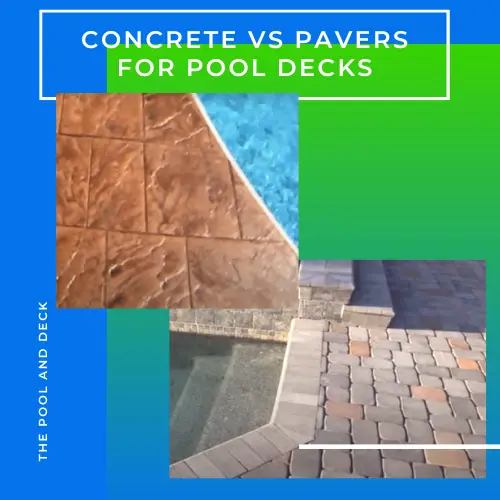
Concrete vs Pavers for Pool Decks: At a Glance
At a glance the comparison of concrete vs pavers for pool decks, is as under:
| Property | Concrete Slab | Concrete Pavers |
| Durability | Less Durable as Pavers Settle Unevenly on the Sand Bed | More Durable as Typically a Much Stronger Base is Prepared |
| Design Options | Limited by Paver Availability | Several Color & Texture Options |
| Slip Resistance | Better Slip Resistance as Joints can increase Traction | Depends on the Texture but generally Poor |
| Heat Dissipation | Paver Joints Help Dissipate Heat to surrounding Earth | Concrete Slabs can get Very Hot under the Sun |
| Ease of Installation | Concrete Pavers are Easier to Install | Pouring a Concrete Slab can be a DIY Project but takes Time & Effort |
| Sealer Requirement | Concrete Pavers must be Sealed Initially and Resealed every 2-3 years | Concrete Slabs must be Sealed Initially and Resealed every 2-3 years |
| Maintenance | Weed Growth between Paver Joints must be Removed Regularly | Regular Cleaning is all that is Required |
| Cost | Concrete Pavers Cost $4 – $6 per sq. ft. This does not include Installation Cost | A 4” – 6” Thick Concrete Slab costs between $4 – $8 per sq. ft. Stamped concrete will Cost $12 – $16 per sq. ft. |
Concrete vs Pavers for Pool Decks: Comparison by Features
Here is the comparison table between a Concrete vs Pavers for Pool Decks on important features:
Durability
Concrete slab pool decks are made by pouring a large, single piece of concrete. The concrete is at least 4” thick, but could be thicker.
The concrete mix is poured on a well prepared base of gravel and sand. The base itself could be 6” – 8” thick and is made of 3 – 4 layers. Each layer is well compacted.
Such a pool deck is a seamless, smooth concrete slab on a very solid base. Concrete slabs are more durable than pavers, as they are less likely to shift and settle over time.
Water seepage from the grade is prevented by a vapor barrier installed between the base and the slab. Sealing the concrete slab pool deck prevents rainwater from permeating in. The durability & longevity of the concrete slab is enhanced, as a result.
Concrete pavers pool decks involve the laying of individual pavers on a sand bed. Concrete pavers are typically 2” – 3” thick. The sand bed is around 2” thick. The strength of a concrete paver deck is lower as the overall thickness is much less.
Moreover, concrete pavers can shift or settle, over time, causing the deck to become uneven. Individual pavers may need to be replaced frequently. If the settling is widespread, you may have to pull out all the pavers and reinstall them.
In its defense, reinstalling a concrete paver deck is a lot cheaper than repairing or replacing an entire concrete slab.
Design Options
When it comes to design options, both concrete slab pool decks and concrete pavers pool decks have their own unique benefits.
It is possible to impart a range of textures & colors on concrete slab pool decks. For example, concrete slabs can be stained or stamped to mimic the look of natural stone, giving the deck a unique appearance. Brushed or honed concrete slabs can be both a design and a safety feature.
Concrete pavers offer a different type of design flexibility. Pavers are available in a variety of sizes, shapes, textures and colors. So, concrete pavers can be arranged in patterns, such as a running bond, basket weave, or herringbone.
Different colored pavers can be mixed & matched to create a custom color palette on your pool deck. This can make the pool deck visually quite appealing.
Slip Resistance
Standard concrete slab pool decks are smooth and hence can be slippery when wet. However, concrete slabs can be made slip resistant by imprinting a texture before the slab sets. Brushed or broomed concrete is highly slip-resistant. Exposed aggregate concrete is another beautiful way of adding slip-resistance.
Care should be taken to get the right texture profile. Too rough a profile may give you excellent traction but may become painful for bare feet. Too shallow a profile, such as in stamped concrete, and there will be little traction.
Slip-resistant additives in the topical sealer, is another technique to ensure your concrete slab pool deck is safe and not too slippery.
The gaps & joints between concrete pavers on a pool deck provide traction naturally. The joints also help in absorbing the surface water more readily. You can further enhance the traction by using pavers with surface texture or topical sealers with slip-resistant additives.
Heat Dissipation
A swim in the pool is refreshing till you step out and almost burn your feet on the hot pool deck. Concrete gets pretty hot, much hotter than natural stones like travertine or limestone. That is because concrete has a fairly low Specific Heat Capacity.
Concrete slabs absorb the heat from the sun but can’t lose them fast enough. Heat retention is high due to higher thickness. Slabs, being large monolithic structures, are in contact with the grade in only one plane. Heat dissipation from the concrete slab to the cooler grade is, therefore, slow.
Concrete pavers, on the other hand, retain less heat, as they are thinner, and can also dissipate heat to the grade through the paver joints. The gaps between concrete pavers create air pockets that allow heat to dissipate faster.
Ease of Installation
The installation of a concrete slab pool deck involves the following steps:
- Grade Excavation
- Base Preparation
- Pouring Concrete
- Surface Finishing
- Concrete Curing (Typically 28 days)
Comparatively, installing a concrete paver pool deck requires less effort as:
- Grade excavation need not be as deep
- A 2” thick sand bed is usually enough
- There is no concrete pouring involved (pavers have to be laid out individually, though!)
- No surface finish required (pavers are pre-finished)
- No need to wait for curing (pavers are pre-cured)
Both can be DIY projects but concrete slabs require more skill and experience!
Sealer Requirement
Both concrete slabs and concrete pavers must be sealed initially and resealed periodically. Properly sealed slabs or pavers will protect the concrete from damage due to water penetration.
A new concrete slab pool deck must be sealed only after the concrete has cured (typically 28 days) You should apply two coats of a good quality penetrating sealer. This should be followed by two coats of a good quality topical sealer.
Good quality concrete pavers should be pre-sealed on all 6 sides. Do check this before installation. If not, you will need to seal it.
Topical sealers typically last for 2 – 5 years depending on the foot traffic and weather conditions. You can easily check the sealer effectiveness by sprinkling a few drops on the slab or paver surface. If the water drops flatten out and get absorbed, it is time to reseal.
Sealing protects concrete from damage caused by water and pool chemicals, prevents growth of mold & mildew and keeps the pool deck looking as good as new.
Maintenance
Concrete slabs generally require less frequent maintenance. All you need to do is sweep them regularly and wash them with soapy water occasionally. Fill and repair any large cracks that may develop and reseal them when required.
Concrete pavers, however, need a higher level of maintenance, mainly because of the joints. The sand within the joints can get depleted due to wind and water erosion. This gives weeds a chance to grow and insects a chance to burrow in.
You need to remove weeds and top up the joint sand frequently. Using polymeric sand rather than regular sand is certainly a better option.
Regular sweeping, soap water cleaning is still required. Replace any damaged or uneven pavers when necessary.
Cost
Between concrete slab vs concrete pavers for pool decks, pavers are certainly a more budget friendly choice.
Concrete pavers cost $4 – $6 per sq. ft. This does not include installation cost. As installation of a 300 – 500 sq. ft pool deck can be done over 2 – 3 days with little tools or expertise, you can save the installation cost by doing it yourself.
A 4” – 6” thick concrete slab costs between $4 – $8 per sq. ft. However, this cost is for a “no frills” concrete slab pool deck. Chances are you will want something more fancy.
Many people like to go for stamped concrete which looks amazing. Stamped concrete will cost $12 – $16 per sq. ft.
Conclusion
When it comes to concrete slab vs concrete pavers for pool decks, a stamped concrete pool deck will result in stunning looks and is sure to turn heads! Of course it does not come cheap.
If you just want a small, functional and yet decent looking pool deck, install concrete pavers yourself. You will not regret it.
Thank you very much for reading the post. I do hope you found it informative and helpful.

